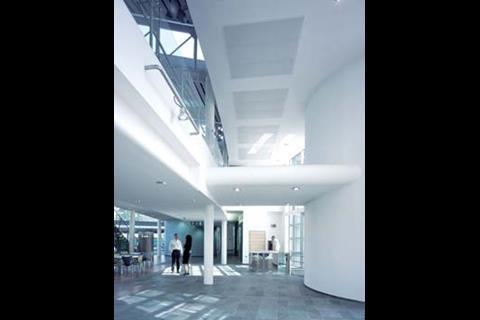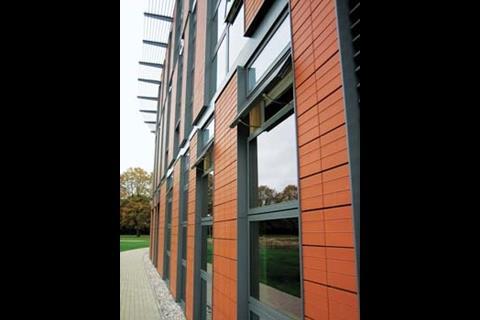Those running and using offices increasingly need to take account of environmental issues. Nick Cullen looks at the BCO’s new Best Practice guide
Environmental issues are becoming ever more important in the design, construction and operation of offices. The main driver for change has been, and will inevitably continue to be, government legislation and regulation. However, pressure from society and a more general realisation that “business as usual” cannot continue into the future is forcing change. The revisions to Part L, PPS 22 and the introduction of energy labelling means there is pressure on all parts of the property chain.
This is why the BCO has published its Best Practice Guide to Environmental Management in Offices. Launched at the end of last year, it aims to provide anyone involved in office procurement and operation with a route map of the issues that need to be addressed regarding environmental management.
The guide is divided into three sections: overview and drivers; procurement, design and construction; and a guide for occupiers.
The guide first of all aims to put a marker in the ground by setting out current best practice, often through case studies. It also considers the whole property cycle, to recognise that the way we design a building has a profound effect on the environmental impact in its operational phase. Detailed information regarding sources of further guidance is also included.
Procurement, design and construction
Good environmental management results in the more efficient use of natural resources. It requires environmental impacts to be identified and then managed. This starts with site selection and procurement and finishes with the demolition or deconstruction of the building. For some, it is about managing risk, both regulatory and legal, but also physical risks such as flooding and contaminated land.
Strategic decisions at the start of a project must be considered in the context of their environmental impact. Choosing a brownfield site reduces the demand for virgin land, and is one of the UK’s sustainable development indicators. There are, of course, risks in terms of contamination, and an environmental report will be required.
Other important strategic decisions may include whether to reuse a building, locating a building near to transport hubs, or locating a development where connection to a low carbon community energy system may be available. All of these have a long term environmental impact on a building or development.
The setting of benchmarks is often seen as risky, as it may lead to additional unplanned costs. The most commonly used benchmarking tool is BREEAM, and more specific benchmarks are also available. Constructing Excellence publishes Key Performance Indicators annually for a variety of environmental impacts.
The choice of the design team and contractor is vital. A team that understands and is committed to good environmental design and is given a clear, unambiguous brief is more likely to deliver environmentally responsible buildings. The brief should set clear, realistic targets. It is also important that the team has clear lines of responsibility with respect to environmental strategies.
About 70 million tonnes of building materials go to landfill each year, and this is under the control of the contractor. Ensuring a contractor has an Environmental Management System (EMS) in place is an important first step to managing construction phase impacts. The tender specification should require contractors to manage and minimise their waste. Local issues must also be considered, such as impacts on adjacent properties and neighbours. Contractors should, therefore, adhere to the considerate contractor’s scheme.
Testing and commissioning a building is a key process that often gets squeezed at the end of a project yet, if not adequately completed, leads to occupier dissatisfaction and inefficient operation. Part L requires the process to be completed and, hopefully, this will have an impact. However, in reality, while buildings may be adequately set up initially, it is only during the first few years that an operator can begin to refine a building’s operational efficiency. The involvement of the design team is essential if this to be achieved.
A guide for occupiers
Once a building is occupied, the onus is on the tenants and building manager to ensure environmental objectives are maintained. An EMS is helpful as it provides a structured means of managing impacts and risks. It requires an organisation to consider its impacts, set targets and devise means of reducing and minimising these impacts.
For a small company, setting up a management system takes time. Subsequent certification to a recognised standard will lead to accreditation fees, but is not absolutely necessary. A requirement of any management system is to keep up to date with environmental legislation. This is not easy, but many institutions publish guidance or run seminars on changes and, for the smaller company, that is the best avenue.
The EMS must extend beyond the building to all aspects of the business. Recycling does not end with putting the can in the right bin; unless there is demand for goods made from recycled materials, the value chain breaks down. It is thus important to consider corporate purchasing policy and ensure suppliers can move to a more sustainable offering.
Much of the environmental agenda falls within the sphere of the modern building systems engineer, in particular the carbon-related issue. While CIBSE members may not be expected to implement or be responsible for many aspects covered in the guide it is important they understand the broad range of issues that need to be considered.
Environmental management is not just for clients. It is for all of us. And so, whether consultant, contractor or building owner, the BCO guide provides a way forward.
There are clear signals from government and from society as a whole that the environment is important, and that business is expected to address its environmental impacts. The government has promised further climate change related legislation, and there is political consensus on the subject.
The message is clear: there is no going back, and environmental standards must continue to improve. Those who seize the opportunities will gain a commercial advantage.
Nick Cullen is a partner with Hoare Lea Consulting Engineers Copies of the Guide are available from the BCO website. Visit: www.bco.org.uk
Variable speed pumping designs made easy

PisolV software enables the fast, cost-effective design of heating and chilled water systems incorporating variable speed pumps. Underlying the program is a significant body of experience with variable speed pumping. PisolV thus makes it impossible to design a bad variable flow system, an essential in this litigious age.
The designs produced maximise pump energy savings without compromising control valve authorities. Designs are fully compliant with CIBSE and BSRIA recommendations. PisolV is quick to use by any level of engineer: no specialist knowledge of variable speed pumping is required.
PisolV is suitable for heating or chilled water circuits to fan coil units, AHUs and chilled beams. Fan coils can be airside or waterside controlled; chilled beams active or passive. Steel pipes are assumed for risers and mains, copper or multilayer pipes are possible for run-outs.
Manifold options exist for speed of installation.
Outputs include a pipe system schematic, maximum and minimum load pump duties, estimated pump energy savings and schedules of DRVs and 2 port control valves, all generated automatically by PisolV.
- For further information or a demo copy, please contact Parsloe Consulting on 01983 756783 or visit www.parsloeconsulting.co.uk
Source
��ɫ����TV Sustainable Design























